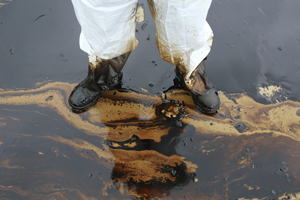Climate Adaptation – Chemical Exposure and Health

EPA works to ensure the proper management of hazardous and non-hazardous wastes, reduce chemical risks and releases, restore contaminated land, and provide timely and effective emergency response.
Increasing temperatures and changes in precipitation patterns may increase our exposure to chemicals. More frequent and intense storms may increase the likelihood of flooding, causing chemicals held in underground storage tanks, landfills, and storm debris to leak or spread to previously unsoiled areas. The melting of permafrost in Alaska may release previously frozen chemicals.
People who are exposed to these chemicals may experience adverse health effects to various body systems, such as:
- Respiratory
- Cardiovascular
- Renal
- Nervous
- Immune
- Reproductive
- Skin
- Hepatic
Children are more susceptible to chemical exposure because they eat, breathe, and drink more relative to their body mass than adults do. Adults with compromised immune systems and pre-existing health conditions may also be more vulnerable to chemical exposures.
